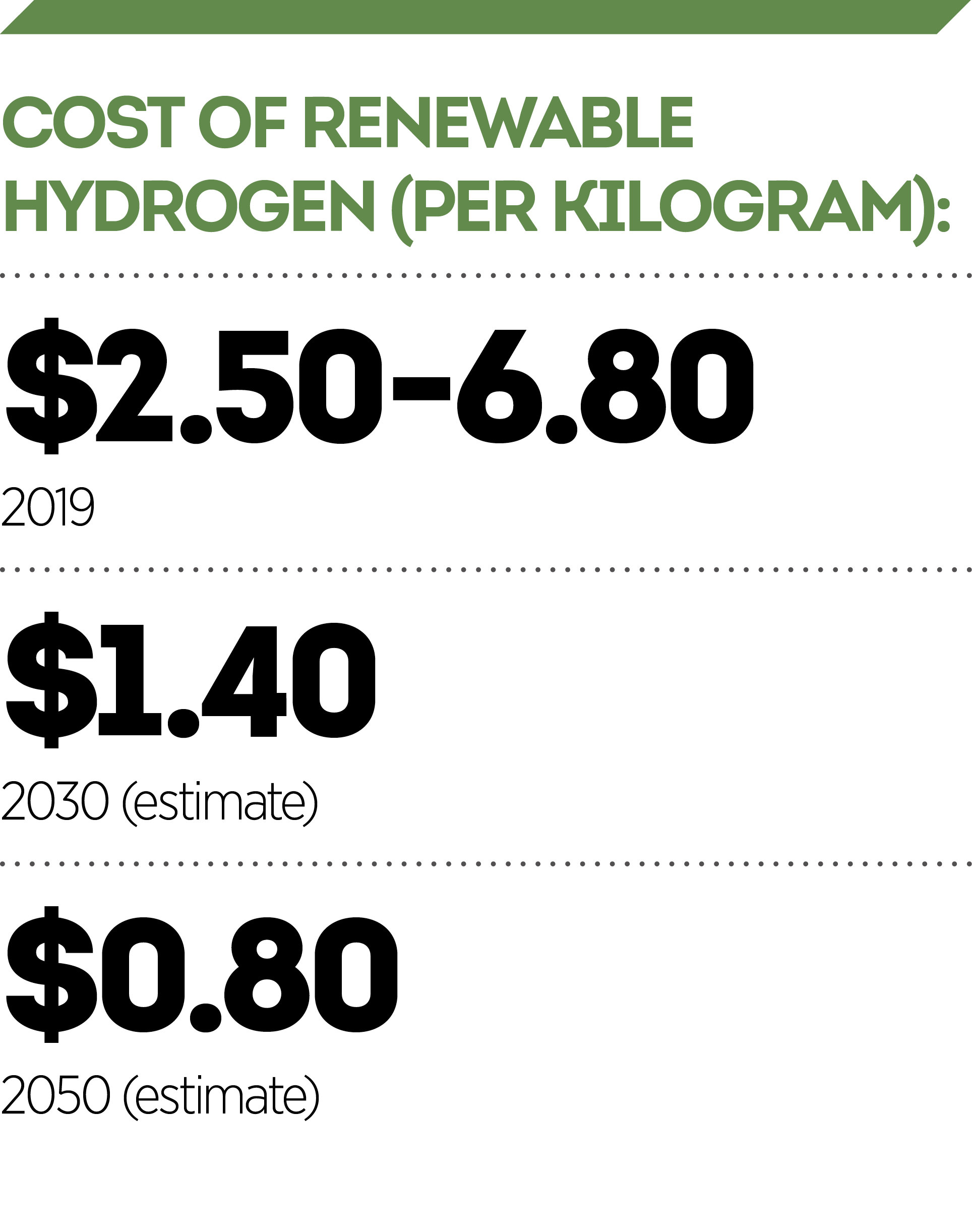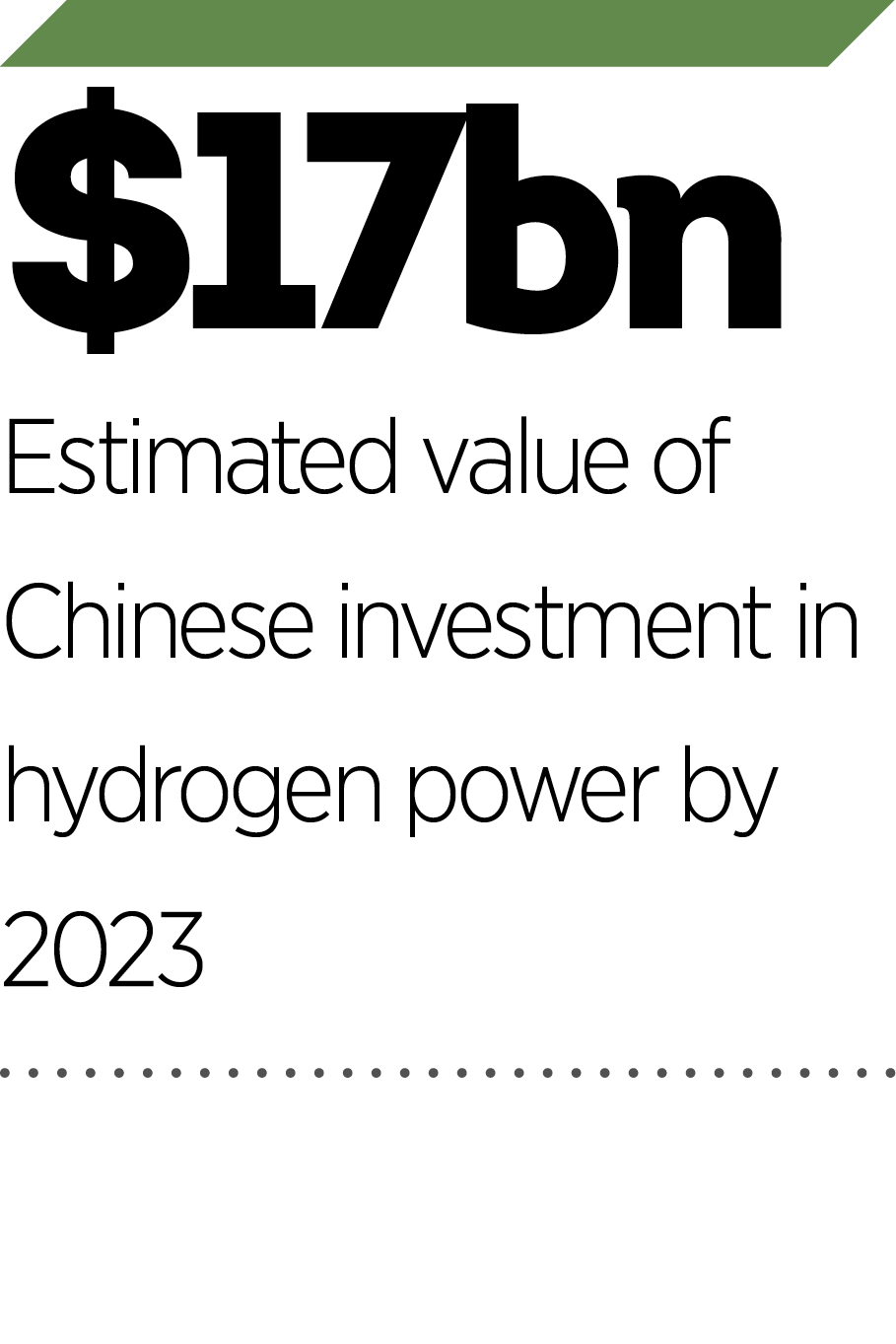An element of success: hydrogen-powered cars could be around the corner
For decades, hydrogen has been touted as a promising source of clean energy, only to be dismissed for its exorbitant cost. Now, however, its price projections have plummeted and the element is enjoying a resurgence in popularity

Hydrogen is the most abundant element in the universe. By mass, it has the highest energy content of any fuel and, when burned, it produces no carbon emissions – only water
On the remote archipelago of Orkney, off the north coast of Scotland, locals often say you don’t need an umbrella – you need a riot shield. Orkney is almost entirely flat with very few trees, so when the islands are not being battered by storms and gale-force winds, they are usually swamped in haar, a damp fog that sweeps in from the sea. Hugh Marwick, a scholar who lived on Orkney during the first half of the 20th century, once called its climate “one of the vilest under heaven”.
But abysmal weather brings unique advantages, too: Orkney is one of the few places on Earth that sustains itself solely on renewable energy. Its winds, waves and tides generate around 130 percent of the electricity its small population needs. With such a surplus of energy, Orkney has even had to explore new ways of storing power to ensure it doesn’t go to waste. The answer, it found, was to convert excess electricity into hydrogen using a zero-carbon method. In 2017, Orkney became the first state to generate hydrogen from tidal power.
Now, the world’s superpowers are looking to this tiny corner of the planet for inspiration. Many have committed to decarbonising their economies: the EU seeks to achieve net-zero carbon emissions by 2050, while China has promised to bring emissions to a peak by around 2030. But in order to meet such ambitious targets, governments will have to broaden their renewable energy efforts to include hydrogen fuel.
Bumps in the road
Hydrogen is the most abundant element in the universe. By mass, it has the highest energy content of any fuel and, when burned, it produces no carbon emissions – only water. This makes it a highly attractive alternative to fossil fuels, particularly in sectors where electrification may not prove as effective, such as aviation, shipping, iron and steel production, or long-distance road transportation.
Investment and government support are precisely what the hydrogen sector needs if it is to play a key role in the clean energy economy
The concept of hydrogen fuel first became popular in the 1970s, when the term ‘hydrogen economy’ was coined by electrochemist John Bockris. During the multiple oil crises of the 1970s, many research programmes were launched into its commercial application, while conferences were held in the US, Europe and Japan. Despite these efforts, though, hydrogen had a hard time winning people’s hearts: the technology required for hydrogen production proved to be very expensive to develop and, once oil prices returned to pre-embargo levels, interest in lowering those costs waned.
Hydrogen regained some of its popularity during the late 1990s and early 2000s, as the world became obsessed with moving away from oil. An article published by Scientific American in 1998, entitled The End of Cheap Oil, even suggested global production of conventional oil would decline within 10 years: this would supposedly occur amid fears that prices would peak while demand kept rising, plunging the world’s economies into crisis. It was largely due to this belief that US President George W Bush became a strong proponent of hydrogen fuel cells. In 2003, he committed $720m to research into this area. Unfortunately for Bush, his successor’s secretary of energy, Steven Chu, later diverted much of that funding into battery research, causing hydrogen to fall out of the spotlight once again.
Light-bulb moment
Public awareness of the potential of hydrogen is still relatively low. Among climate advocates, automakers and governments, though, it is enjoying a renaissance: Japanese automaker Toyota, for example, has consistently bet on hydrogen technology, launching its first fuel-cell vehicle in late 2017, and this year, ahead of the G20 summit in Osaka, the International Energy Agency claimed the world was on the cusp of finally unleashing hydrogen’s potential. “Given the nature of the current climate emergency, the utilisation of a clean fuel generated from renewable energy sources is gaining significant traction,” Anthony O’Mullane, a professor of science and engineering at Queensland University of Technology, told The New Economy.

However, most of today’s hydrogen is far from clean. In fact, about 96 percent of total hydrogen production is made using methane, while just four percent comes from water electrolysis – the method of production through which zero emissions are emitted. What’s more, a huge shift is needed if water electrolysis is to occur on a large scale. It’s for this reason that hydrogen still has critics: Tesla CEO Elon Musk, for example, has dismissed hydrogen fuel cells as being “mind-bogglingly stupid”.
Despite the criticisms of Musk – who, as the head of an electric car company, may be slightly biased against fuel cells – studies suggest that producing hydrogen through water electrolysis is set to become much cheaper. In August, Bloomberg New Energy Finance (BloombergNEF) reported that the cost of renewable hydrogen could fall as low as $1.40 per kilogram by 2030, down significantly from the current range of $2.50 to $6.80. It even suggested this figure could drop to $0.80 by 2050, which would finally make hydrogen an economically viable, carbon-free energy source.
“The main barrier to the uptake of large-scale electrolysis to produce hydrogen has been cost,” O’Mullane said. “However, with improvements in electrolyser technology and manufacturing processes, this cost is steadily decreasing.”
One of the things that has made water electrolysis so expensive in the past is the catalysts used in the process, which are typically made from costly metals such as iridium oxide and platinum. But O’Mullane, along with PhD student Ummul Sultana, recently discovered a way of using cheaper and relatively more available materials instead. Technological advancements like this could, in the long term, help meet BloombergNEF’s estimates.
Powering forward
Government pressure will also play a key role in commercialising hydrogen technology. In light of the EU’s zero-carbon targets, German engineering company Bosch announced in April that it would be teaming up with Swedish fuel-cell company PowerCell to begin mass producing fuel cells for trucks.

“The EU’s fleet requirements for trucks call for a reduction of CO2 emissions by 15 percent on average by 2025, and 30 percent by 2030,” Heather Butcher, PR and Communications Manager at Bosch UK, told The New Economy. “Bosch’s view is that this target can only be reached by electrifying more and more of the powertrain. The fuel cell can play a decisive role here.”
Among the countries most aggressively pursuing hydrogen adoption is China, which aims to get one million fuel-cell vehicles on its roads by 2029. While it’s easy to scoff at such a proposal – the country is currently home to just 1,500 fuel-cell vehicles, most of which are buses – one must remember that China has made similar leaps in the recent past. Having lagged behind Japan, South Korea, the US and Europe until as recently as 2014, China is now the world’s largest electric vehicle market. It didn’t claim the top spot by accident, either: according to the US-based think tank Centre for Strategic and International Studies, China has spent an estimated $58.8bn subsidising the electric car industry over the past decade.
Now, it plans to do the same for hydrogen. In September, the South China Morning Post reported that local authorities in 10 Chinese cities will hand out incentives of between CNY 2m ($280,190) and CNY 4m ($560,381) for each refuelling station constructed. When the country’s acquisition of foreign hydrogen technology is taken into account, BloombergNEF estimates that China will have invested over $17bn in hydrogen by 2023.
Investment and government support are precisely what the hydrogen sector needs if it is to play a key role in the clean energy economy. Although production is becoming more affordable, the difficulties of achieving large-scale hydrogen adoption should not be underestimated. Fuel-cell vehicles will need to compete with electric cars at a time when batteries are becoming cheaper and more efficient. With enough subsidisation, though, renewable hydrogen may finally find a home beyond the remote islands of Orkney, and take its place as the world’s preferred carbon-free energy source.













